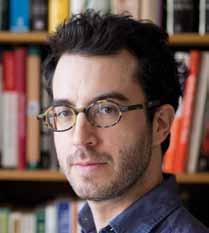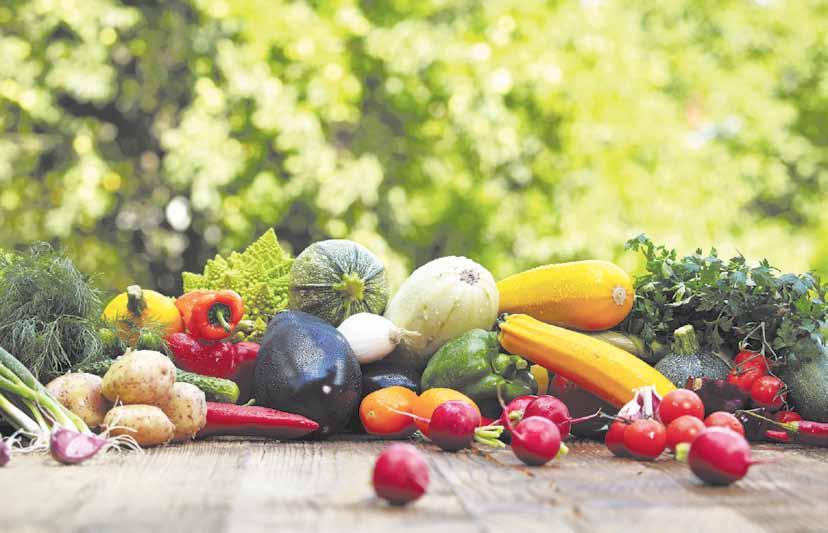
17 minute read
HEALING THE
Healing the Immune System Autoimmune Breakthroughs Offer New Hope
Some 23 million Americans suffer from one or more autoimmune diseases—a category comprised of more than 80 conditions, including fibromyalgia, Hashimoto’s disease, psoriasis, rheumatoid arthritis and Type 1 diabetes. These pernicious disorders are notoriously difficult to diagnose, even harder to treat and can be debilitating, diminishing the quality of life for sufferers.
Advertisement
Another commonality is the increased prevalence of autoimmune disease in women versus men; in the case of lupus, for example, a nine-fold difference. Some early indicators are that this may be related to a “gene dosage effect”, as men with XXY chromosomes have the same risk of developing lupus as other women, and women with XXX chromosomes (known in medical parlance as “superwomen”) have an even higher risk of autoimmune disease, according to Judith James,
by April Thompson
chair of the Arthritis & Clinical Immunology Program at the Oklahoma Medical Research Foundation, in Oklahoma City.
Yet there is hope on the horizon, as scientific discoveries unlock important insights about the manifestation and progression of autoimmune diseases leading to new treatments and prevention tips. Evidence is also mounting around the role of diet and lifestyle in autoimmune conditions, giving patients new avenues for taking charge of their health instead of simply waiting for a cure.
Autoimmune diseases are chronic and can affect almost any part of the body, including the heart, brain, muscles, skin, eyes, joints, lungs, kidneys, glands, digestive tract and blood vessels. Each disease carries its own set of symptoms, but inflammation is nearly always present, and are all connected by how the immune system attacks the body’s healthy tissues. “Those shared characteristics hold the potential for shared treatments, and ultimately potentially common cures,” says Jane Buckner, president of the Benaroya Research Institute (BRI), at Virginia Mason, in Seattle, which works to advance the prediction, prevention, reversal and cure of immune system diseases.
“I’m excited about our progress toward prevention. We are working to understand those tipping points in transitioning into disease that help us understand who is at highest risk, and helps give very directed therapies,” says James.
Self-Healing from Autoimmunity
By her early 20s, Mickey Trescott, of Willamette Valley, Oregon, was bedridden and had lost her job to autoimmune
disease. At one point, doctors thought it was multiple sclerosis (MS); she was dizzy, numb, falling over and slurring her speech. Eventually, she was diagnosed with both Hashimoto’s and celiac diseases, affecting the thyroid and small intestine, respectively. Trescott, a nutritionist, chef and author of The Autoimmune Paleo Cookbook, had been vegan for 10 years, but had a feeling that her body needed something different.
She found an early version of what would become known as the autoimmune protocol (AIP), and in following its guidelines, began to find relief. Trescott connected with other women and started a private Facebook group to share information on what was improving their condition from which the AIP community sprung. AIP, an elimination diet that seeks to reset the immune system by cutting out inflammation-causing foods and treating leaky gut, has much in common with the paleo diet and promotes vitamin- and nutrient-rich foods. However, every individual comes out of the AIP process with a customized diet.
For Trescott, “Gluten is a forever-no, and I am also allergic to dairy and sensitive to a lot of nightshade vegetables, like tomatoes and peppers.” It took three years to recover most of her functioning, and although she had been a personal chef, it was still challenging to determine a new approach to eating that didn’t include the grains and legumes that had been staples of her diet.
Trescott is still on medications, including the same thyroid support she’s relied on from the start. “There is a misconception that the AIP is an alternative to conventional medicine. We really pride ourselves on using all the tools in our toolbox, including surgery, medication and lifestyle changes,” she says.
Anecdotal successes like Trescott’s have led researchers to pursue funding to test the AIP’s efficacy. In a pilot study of 18 individuals with an average sick time of 19 years that didn’t respond to traditional medication, 73 percent were in clinical remission at the end of the trial, having followed the AIP. “It was a small sample size, but the results are promising,” says Trescott.
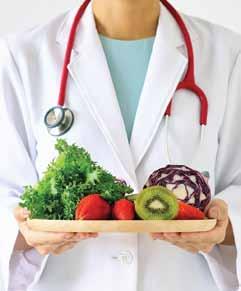
Physician, Healed Thyself
Like many physicians, Terry Wahls focused on treating her patients with drugs or surgical procedures—until the Iowa City doctor was diagnosed with MS in 2000. Within three years, despite conventional medical treatments, her back and stomach muscles had weakened to the point where she needed a tilt-recline wheelchair, and by the summer of 2007, she could no longer sit up.
Though Wahls had been a vegetarian on a low-fat diet for 20 years, she went back to eating meat and gave up all dairy, wheat and grains, but still wasn’t improving. Delving back into the science of her condition, Wahls realized that mitochondrial support was key, and the speed of her decline slowed while taking a cocktail of vitamins to support its functioning.
It wasn’t until she took a comprehensive approach to optimize everything she could take in through her food rather than relying on supplements that she saw radical results: Her brain fog, fatigue and pain went away and she biked around the block for the first time in six years. “Taking in nutrients in the form of food rather than supplements, you get related compounds and thousands of others in biologically anticipated ratios,” explains Wahls. “I still do take some supplements, but the magic is the food.”
Those key ingredients, says Wahls, include magnesium, zinc, selenium, sulfur, amino acids, cholesterol, omega-6 and omega-3s, fats, carnitine and creatine. Her rule of thumb for daily intake is three cups of leafy green vegetables; three cups of sulfuric vegetables like cabbage, mushrooms and onions; and three cups of deeply pigmented vegetables, plus sources of protein for meat eaters and vegetarians.
While her work was initially not accepted, today she has funding from the National MS Society and her research has been published in numerous peer-reviewed journals. “Basic science is now showing that the microbiome has a huge impact on the immune system activity and the brain; the food we eat can turn gene expression on and off,” says Wahls, who hasn’t taken any drugs for her autoimmune condition since 2008.
Buckner cautions against patients trying to manage disease with lifestyle changes alone, without giving available allopathic treatments a fair try. “People do better if they are treated early and aggressively. They are reliant on fewer medications down the road and don’t have permanent damage if they seek treatment early.”
However, even researchers focused on pharmaceutical approaches acknowledge the importance of diet and lifestyle. Meggan Mackay, professor of Molecular Medicine at the Feinstein Institutes for Medical Research, at Northwell Health, in Manhasset, New York, believes this can play a critical role in disease management. She cites numerous studies showing exercise as a stress-buster positively influencing disease outcomes, as well as a more specific study looking at the benefits of adding fish oil and vitamin D to the diets of lupus patients. “The rise in obesity, which is linked to increased inflammation in the U.S., may be one of reasons we are seeing more autoimmune disease than ever,” says Mackay.
At-risk individuals should be aware of factors under their control, adds James. “If someone is worried about autoimmune disease running in their family, monitoring and maintaining adequate vitamin D levels and avoiding smoking and other high-risk behaviors can help improve their chances.” Even sleep patterns can play a role in disease manifestation, says the researcher. In one study, individuals at high risk for autoimmune disease that slept less than seven hours per day were more likely to develop an autoimmune condition, according to James.
Common Links Serve as Research Clues
There are some clear links between autoimmune diseases, such as the genetic predisposition that runs in families. “Someone with rheumatoid arthritis may have a sister with celiac disease, for example, and one individual may suffer from multiple autoimmune conditions. We can learn from these common genetic links,” says Buckner. These common links can serve as important clues. For example, Buckner says they are able to demonstrate changes in T cells in diabetes and MS that are the same, which might lead to common treatments for the two conditions.
While the process from basic scientific discovery to development of effective treatment can be slow, there are some concrete breakthroughs autoimmune researchers are excited about, having demonstrated ability to both prevent and delay disease. Citing a recent clinical trial published in the New England Journal of Medicine, “They have demonstrated in kids at high risk for developing Type 1 diabetes the ability to delay onset for at least two years. It’s an incredibly exciting finding,” says Buckner.
Mackay is hopeful about advances in basic science addressing specific immune system abnormalities linked to inflammatory problems. “Lupus is very challenging to diagnose and treat because it can affect every system in the body,” says Mackay, whose research team has focused on lupus

for decades. “The only forms of treatment have been very immune-suppressive medications that shut down the immune response. None of these medications are specific, so in shutting down the immune response to treat lupus, they in turn interfere with the body’s ability to fight off infection and cancer.” Researchers are now honing in on single cells from biopsies that indicate which proteins are abnormal, thereby helping develop more selective therapies, she says.
Seeing progress in the lab is one thing; seeing it in the waiting room is another, and that’s where autoimmune scientists and clinicians are really beginning to note a difference. “I’ve seen patients for 25 years, and when we started, we had very few options in my clinic, which was full of wheelchairs,” says Buckner. “In the last 20 years, we have seen an explosion in research and available treatments. I don’t have wheelchairs in my office anymore.”
Connect with Washington, D.C. freelance writer April Thompson at AprilWrites.com.
Fight Back With A Healthy Immune System Got Vitamin C?
High Dose IV Vitamin C Infusion for:
Immune enhancement • Wound healing Bacterial & Viral protection • Cartilage repair Stimulation of collagen formation Growth and repair tissues
CALL NOW TO LEARN MORE
Premium grade CBD and professional grade nutraceuticals
RGCC TESTING CENTER
Now treating Ascorbic Acid (Vitamin C) sensitive tumors
REVITILIZATION IV TREATMENTS
MYERS’ COCKTAIL • IMMUNE TURBO BOOSTER GAME DAY FOR ATHLETES • FAT BURNER FOUNTAIN OF YOUTH ANTI-AGING • ROYAL FLUSH DETOX



972.212.4341 •KHWCT-IVTherapy.com
5944 WEST PARKER RD., SUITE 400 | PLANO, TX 75093
In Plano, small to medium-sized businesses from offices to restaurants are making a positive impact on the environment such as reducing waste, using water and energy efficiently, avoiding using Styrofoam at restaurants and educating the public about green businesses as part of the city of Plano’s Green Business Certification (GBC) program.
The GBC has initially offered certification to offices, retail outlets, restaurants, grocery stores and multifamily communities. As the program progresses, additional industry categories may be included in the certification process.
The (GBC) program is managed by the city’s Commercial Recycling Division. It verifies that businesses are upholding a commitment to conduct their daily practices to reduce the impact on our environment and focuses on a checklist of green operational practices designed for consumer businesses with walk-in clientele. The city intends to ensure certified businesses maintain environmental integrity and are authentic in their actions and results. Residents will be able to tell whether the Plano Green Business Certification business is considered green because of the decal that will be displayed in front of the establishment.
Not only do green business practices benefit the environment, they make good economic sense. Candidates for the GBC program must provide evidence of completion of specific green initiatives in the areas of general education, waste reduction, energy efficiency, water efficiency, pollution prevention and sustainable purchasing.
There is also an elective category of innovation for those businesses that wish to elevate their sustainability efforts. Some initiatives vary by industry, but all have core requirements which must be fulfilled for certification. See map of Certified Green Businesses at Plano.gov/2733/Find-a-Green-Business. For more information, call 972-769-4393 or email ahernandez@plano.gov. Snappy Salads receives Green Business Award
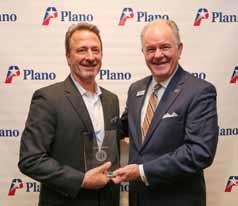
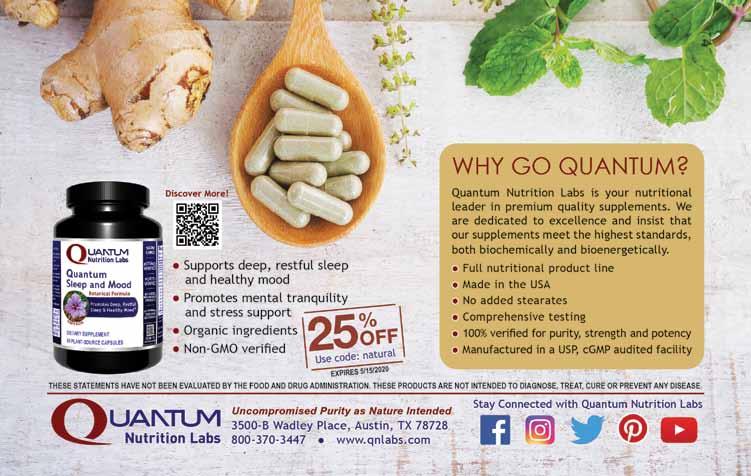
Immune Enhancing Tips During Covid-19
Don’t disrupt the immune system; use products with naturally sourced ingredients that will help to build, not disrupt, the immune system. Use biodegradable wipes to avoid clogging the sewer. Use products containing thyme oil and citric acid, which are proven to kill 99.9 percent of illness causing germs without chlorine and other endocrine-harming substances. Jenny and Kurt
Kretsinger
Jenny and Kurt Kretsinger are the owners of Health & Wellness Co. For more information, call 214-683-9901 or email Wellness@datebook.com.
Vitamin C and zinc.
In many places, including China and even New York, these are proving to be great boosters. Make sure the vitamin C comes from a whole source. Drink plenty of water. Because the coronavirus goes for the respiratory system, good fluidization in the body will help things circulate all the way through as they should.
Do not give in to fear or panic. Fear leads to susceptibility; if we are afraid something may happen and we keep thinking about it, that opens the doors to allow it to happen. Trust that the human body has an innate desire to be well; it does not want to be sick. Focus on wellness and wholeness and good, healthy thoughts, and the chances are that we will be just fine. Take a walk out in the beautiful sun and get the vitamin D 3 in. Breathe through the nose slowly, calmly and deeply—and smile. Cathy Lemmon
Cathy Lemmon, BA, LCPH, CHP, is a member of the Alliance of Registered Homeopaths and owner of Healthy Healing Arts, LLC. For more information, call 469-383-8442 or visit Healthy HealingArts.com and hpwwc.org.
FLOW ER WOW -ER Beautiful Floral Designing
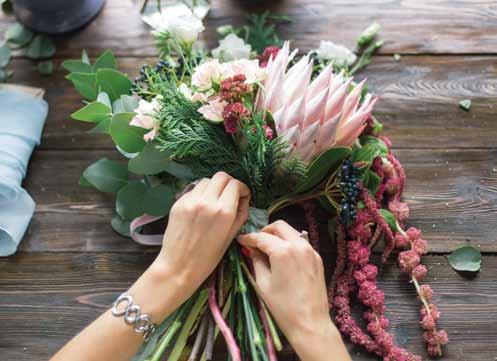
by April Thompson F resh-cut flowers can elevate a space with color, scents and textures that draw the eye and nose, but professional floral designs can be pricey. DIY arranging, however, is an easy, fun and inexpensive creative outlet that can also help cultivate mindfulness. Flower arranging is more than just a decorative art; it’s a spiritual activity that helps create a kinship with nature and merge the indoors and outdoors.
Ikebana, the Japanese art of flower arranging, dates back to the seventh century, when floral offerings were made at Buddhist altars, according to Jeanne Ha, owner of the Washington Flower School, in Takoma Park, Maryland. In the 16th century, Japanese samurais practiced flower arranging prior to combat to help calm them and stay centered, a stress-reducing activity most of us can benefit from today. “Seasonal flowers are an important element of Ikebana,” says Ha, part of a longstanding Japanese tradition of appreciating plants and flowers throughout the four seasons.
Finding a Floral Style
As with any artistic medium, creative choices are important in floral arranging. We can opt for a fussy, formal style, a rustic farmhouse look or a modern, asymmetrical design. “The good news is you can’t mess up flowers. Whether multidimensional or one-sided, monochromatic or multicolored, you really can’t go wrong,” says Kathy Jentz, publisher of Washington Gardener Magazine and a flower arranging instructor in Silver Spring, Maryland.
Like a good meal, the ingredients of a bouquet are as important as how they are assembled. Start with organic, pesticidefree buds. “Look for local, seasonal flowers, which will be fresher and last longer than those flown in,” says Betty Ann Galway, a certified floral designer and instructor at the Norfolk Botanical Garden, in Virginia. Farmers’ markets, community supported agriculture CSAs and pick-your-own farms are all great places to find locally, sustainably grown flowers, according to Jentz. To The good news is you can’t mess up flowers. ~Kathy Jentz
select for long shelf life, look for fresh-looking stamens and foliage, and firm heads on flowers. Mums, carnations and asters will last up to three weeks, says Galway.
When selecting flowers, Ami Wilber, floral and event décor designer at the Washington, D.C., Hillwood Estate, Museum & Gardens, recommends starting with a color scheme, whether limiting the palette to one or two colors, using analogous colors like pinks and purples or selecting complementary colors like blues and oranges. “It’s also good to find a focal flower or a show-stopper that will immediately draw attention to a bouquet,” says Wilber.
Prepping the flowers before arranging will also prolong an arrangement’s longevity, including cutting stems diagonally to provide more surface area for water, suggests Jentz. She also recommends plunging flowers into cool water immediately after trimming their stems. Leaves pump water up the stem, so leave a few on while clearing those from the bottom that would otherwise be submerged in water, adds Galway.
There are many ways to create structure for an arrangement, most of which is often hidden. Wilber stuffs chicken wire into an opaque container and then tapes down the top with a grid of floral tape to provide more control over the direction of the stems. Ha uses floral foam, soaked to provide hydration, into which stems can be inserted at any angle to create a gravity-defying design.
Different styles of arranging draw from different principles, but many common rules of thumb apply; for example, using odd numbers of each type of flower and adding in the largest flowers first to create an anchor for the composition. For a rustic, farm-totable bouquet, look beyond just blooms to incorporate seed pods, grasses and other foliage from the backyard or woods, says Wilber. These will not only fill in gaps left by thin-stemmed flowers, but also help create contrast in texture, she adds, recommending that 70 percent of the container be green.
Once the design is complete, finetune the arrangement by stepping back to see the big-picture look and making any adjustments, removing discolored leaves and adding greenery to any bald spots, says Wilber. Many designers wrap large, flat leaves around the inside of a container for a clean, polished look that hides the stems.
Most importantly, don’t forget to stop and smell the lilacs. Let the flowers lead the design and let go of any unattainable vision of perfection. “Appreciating the flowers and being thankful is an important part of the process, too,” says Ha.
Connect with Washington, D.C. freelance writer April Thompson at AprilWrites.com.
Flower Arranging Tips From a Pro A healthy, professional-looking bouquet doesn’t take years of flower designing to achieve; these tricks of the trade will help neophyte designers get started.
To loosen up tightly wound buds, breathe on them. Hot breath will open buds up faster, says publisher and arranger Kathy Jentz.
An arranging technique Jentz recommends is clustering blossoms between the index finger and thumb of the less-dominant hand, resulting in a tight arrangement that can be held in place by a rubber band pulled up to the tops of the stems.
If working with hydrangeas or other flowers with woody stems, smash open the stems along the length to get more water circulation.
Consider upcycling common containers to make flower vases, Jentz says. “You can create recycled vases out of old jars and bottles, or use chalk paint to colorfully cover over a tin can.”
The secret sauce in flower food is simply sugar and citric acid, says Jentz, so a little lemonade mix added to the water of an arrangement will work fine in a pinch.
WHOLE HEALTH FOCUSED INTEGRATIVE DENTISTRY:
Our practice philosophy and vision begins with “do no harm.” We engage in preventative, minimalistic and natural interventions when applicable and treat our clients with the utmost kindness and compassion. Our goal is to provide top-notch whole-health focused Biological/Holistic oral and dental care.

f Mercury-Free f Mercury-Safe
f Ozone Therapy
f Homeopathics for Dental Conditions
f Non-Surgical Periodontal Therapy f Early Intervention Ortho to Prevent the Need of Braces
f DNA Appliance and Sleep Apnea
Dr Mirkal BDS DDS AMD is a Board certified Biological Dentist and an Airway Mouth Doctor. She is SMART certified, ozone therapy certified and environmental friendly dentist. We are a family dental practice with a holistic approach for all ages.
Call Today: 972.885.9191 3821 Long Prairie Road, Flower Mound, TX 75028 texasholisticdentist.com

